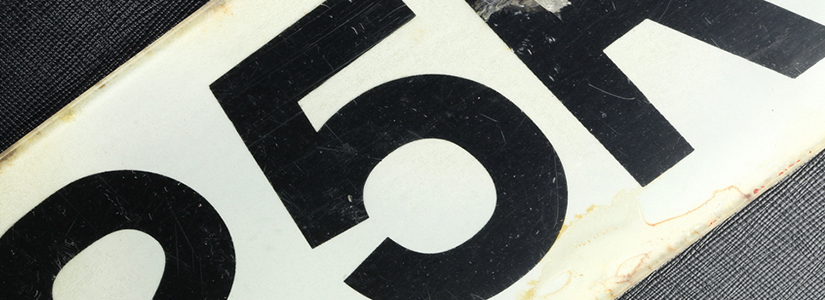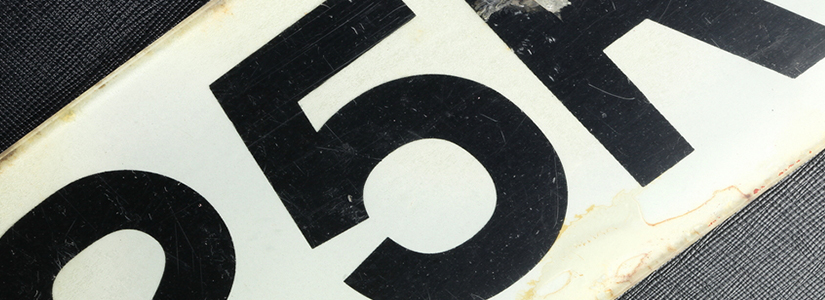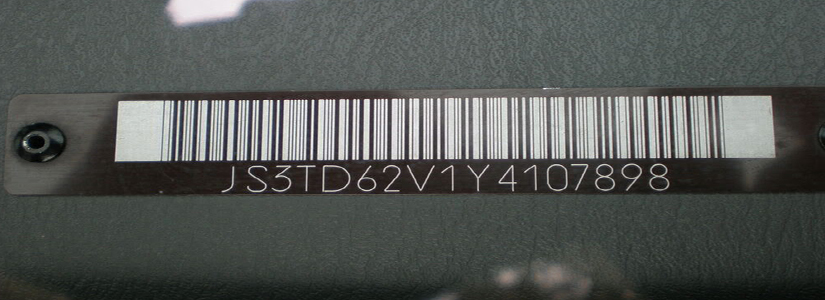
What’s The Difference Between Your Number Plate And VIN?
7th Apr, 2017
“It’s all in name” – it’s one of those phrases we’ve heard time and again. That’s rarely more true than in the case of your car, which – along with its make and model – actually has its own unique identity, often marked in more ways than you might realise. There are two major identifying ways – one is via your number plate, and the other is your Vehicle Identification Number (or VIN). You might well already be familiar with both of them, but this week on the blog we’re going into detail about the key differences between the two.
Looking At Your Car By The Numbers

We’re sure you’re familiar with your car’s number plate; you likely even know it off by heart. It’s not just a string of random numbers and letters though – each one gives a distinctive piece of information about your car. The first two letters show where your car was registered, with the very first standing for the general region and the second representing the nearest DVLA office. The two numbers in the middle, meanwhile, show us the age of the vehicle right down to a six month period. (Quite an unnerving concept when you think about it – imagine going about town with your own age permanently stamped onto a badge on your chest…!) The last three letters are random, giving the car a unique identity.
Your number plate serves some really simple purposes – basically, it can be used to track a car in the event of a crime or accident, allowing the police or government to find the owner or driver and take appropriate action. The first registration process been around since the turn of the last century when motor transport first really took off in Britain, and we’ve been getting nasty surprises from speed cameras ever since.
Finding The Vehicle Identification Number

The first thing to note about your car’s VIN is that it’s not the same as your number plate – it’s a far longer string of numbers that gives information about your car’s identity in even greater detail. It’s a fingerprint, basically. It’s usually 17 characters (or less, if it’s been manufactured before 1981) that tells you the car’s unique features and specifications. This includes:
- Where the car was built
- Who the manufacturer is
- Whether it’s ‘flexible fuel’
- The vehicle brand, size and engine type
- The manufacturer’s official security code
- The car’s model year
- Which plant assembled the vehicle
- The serial number
The VIN can be used to track recalls, registrations, warranty claims and insurance coverage. It’s also a key instrument in helping cut down on vehicle crime and theft. The fingerprint analogy actually works quite well – the VIN can’t be changed, unlike registration plates (which are far more visible, but can be switched out far more easily). The VIN is registered and physically fixed to the car – often in several places – when it’s first built, and is attached to it forever. This makes it even easier for officials to trace cars that have been lost, or are doing things they shouldn’t be.
At Scrap Car Network, getting all the details down is important to us to – we make sure that when we scrap your car, we’re working well inside the law. This means that you can rely on a quality, responsible service. While we’re on the topic, we’re environmentally friendly, too! It’s easy to get started on scrapping your car – all you have to do is visit our homepage to enter your car reg and postcode, and within moments you’ll be away!
Don’t forget to follow us on Twitter: @ScrapCarNetwork